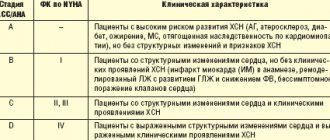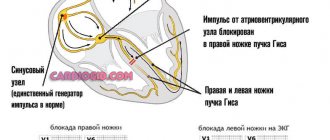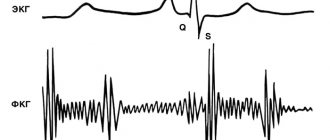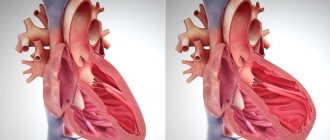Rheumatoid arthritis is a chronic systemic disease of connective tissue with predominant damage to peripheral (synovial) joints of the type destructive-erosive polyarthritis. Seronegative rheumatoid arthritis has ICD code No. M05.8, seronegative rheumatoid arthritis – M06.0. Probable rheumatoid arthritis in the ICD is defined with codes M05.9, M06.4, M06.9. Rheumatologists at the Yusupov Hospital, using the latest research methods, establish an accurate diagnosis and promptly prescribe adequate treatment.
To avoid unnecessary examinations, adhere to the following tactics:
- The true localization of the lesion is clarified (joint or periarticular structures);
- The nature of the lesion is determined (the predominance of the inflammatory or degenerative process);
- Determine the extent of the lesion (local, limited or generalized);
- Carry out differential diagnosis.
Doctors solve these diagnostic problems before settling on a diagnosis of rheumatoid arthritis. During treatment, patients are kept in rooms with a European level of comfort. They are provided with dietary food and individual personal hygiene products. Severe cases of rheumatoid arthritis are discussed at a meeting of the Expert Council. Candidates and doctors of medical sciences, doctors of the highest category take part in its work. Leading specialists collectively develop patient management tactics.
I34 Non-rheumatic lesions of the mitral valve
Excludes: mitral (valve): disease (I05.9), insufficiency (I05.8), stenosis (I05.0), lesions specified as rheumatic (I05.), with an unknown cause, but with mention of: aortic valve disease (I08.0), mitral stenosis or obstruction (I05.0)
I34.0 Mitral (valve) insufficiency
I34.1 Prolapse (prolapse) of the mitral valve
Excludes: Marfan syndrome (Q87.4)
I34.2 Non-rheumatic mitral valve stenosis
I34.8 Other non-rheumatic lesions of the mitral valve
I34.9 Non-rheumatic disease of the mitral valve, unspecified
Social adaptation
Dividing children into “special” and “normal” can quickly turn children with mild disabilities into disabled people who become incapable of independent living and require constant care. Such patients live in a fenced-in world, do not communicate with peers, and are unfamiliar with ordinary childhood hobbies and interests. On the other hand, among healthy children the correct attitude towards people with disabilities has not been formed.
Isolating children labeled as “unteachable” in boarding schools and special schools does not improve the situation. Therefore, these outdated traditions are increasingly being replaced by home education in the circle of relatives who are ready to engage in their development and adaptation in society. Parents, with their support, help to get education, treatment, and communication with peers.
When treated correctly, such patients actively interact with others, and they develop an interest in other people and their activities. Using simple, accessible games, the teacher can begin to communicate with the ward and teach him the skills necessary for independent living.
In Western European countries, rehabilitation centers are common, in which patients undergo all stages of adaptation.
In Belgium, one form of such structures is rural communities, in which patients, along with service personnel, participate in organizing life support. They work together in workshops, agriculture, bakeries. In Germany, such communities are common in the form of religious communities. Similar communities have been organized in Russia. In them, patients receive the necessary knowledge, which subsequently contributes to their social adaptation. Mental retardation is a serious and incurable disease, but the caring environment and attentive attitude towards such “special” people will help them find their place in society.
Classification
According to this international classification, ICD 10 code lists all existing heart defects.
There are quite a few of them. Conventionally, all defects can be divided into two groups, each of which has its own subgroups:
- White. Heart diseases in which mixing of venous and arterial blood does not occur.
- defect of the interatrial and interventricular septum;
- pathologies caused by depletion of the pulmonary circulation;
- defects associated with depletion of the systemic circulation;
- pathologies not associated with hemodynamic disorders.
- Blue. Venous and arterial blood mix.
- defects caused by enrichment of the small circle;
- pathologies caused by depletion of the small circle.
Each of the above groups and subgroups has its own specific code, which helps to determine the type of disease as accurately as possible.
Clinical forms of mental retardation
The classification of oligophrenia in practice is based on the main clinical sign of the disease - mental retardation. The severity of the disease has four degrees and is indicated in the ICD by codes:
- light – F70;
- moderate – F71;
- heavy – F72;
- deep – F73.
The human psyche is an area of continuous study and research. Sometimes it can be difficult to make an accurate diagnosis of the disease and relate it to a certain degree. Therefore, the ICD classification of mental retardation also includes other forms of mental retardation (F78). If there is difficulty or impossibility of diagnosis, for example, due to the patient’s blindness or deafness, unspecified (F79).
Mild degree
To quantify the degree of the disease, the intellectual development coefficient (IQ) is used. Thus, mild mental retardation is manifested by an approximate IQ level of 50-69 and corresponds to the development of a person aged 9–12 years.
This form of pathology is the most common and has many variants of manifestation.
Mild mental retardation can vary from almost normal, that is, at the level of mentally healthy people with a low IQ level, to more severe manifestations. Thus, there is significant heterogeneity in clinical indications, differences in the pace of mental development, as well as different severity of mental disorders observed in patients as they gain life experience.
A change in the usual life pattern leads to the manifestation of a mild degree of MR in a later period. Most patients finish incomplete secondary school. Mental retardation manifests itself when such patients try to continue their education or undergo a medical examination in connection with military service, registration for work, as well as during a forensic psychiatric examination.
Such patients have well-developed speech, quite adequate behavior and independence in their lifestyle. Weakness of thinking is masked by a good ability to imitate and mechanical memory.
Identification of patients with mild mental retardation requires careful research using special methods. They reveal such manifestations of pathology as difficulty in the transition from simple generalizations to more complex ones, from sensory cognition to abstract thinking.
Despite the general underdevelopment of the psyche, patients retain their individuality. They have their own character, social habits, and have their own personality traits.
Extreme manifestations of pathology:
- swagger;
- excessive mobility;
- excitement;
- conflict;
- importunity;
- hypersexuality.
The other extreme is also possible:
- lethargy;
- lethargy;
- apathy;
- indifference to everything around.
Most often, average indicators of these manifestations are present, and only some cases of characterological features indicate the presence of pathology.
The common characteristic of such patients is the inability to experience higher emotions; they have no need to understand the environment. They may show interest, but at the same time they do not gravitate towards studying and understanding reality. The volitional sphere of patients combines weakness of initiative with excessive impulsiveness of behavior. They are highly suggestible, prone to imitation, and very stubborn.
Mild mental retardation gives patients weak self-control and low ability to restrain their impulses, insufficient holistic thinking of actions, but at the same time, under the influence of a change in the situation, they can adjust behavior and foresee the possible consequences of actions.
It is worth noting that the increased suggestibility and tendency to imitate such patients works positively when the socio-psychological climate in which the patient is located changes.
Therefore, if he is in unfavorable conditions, then mental retardation worsens and leads to antisocial phenomena: reluctance to work, disregard for generally accepted norms of behavior. Such patients abuse alcohol, can become drug addicts, commit thefts and other acts that violate the law.
Moderate degree
Moderate mental retardation appears earlier than its mild form. The IQ level of patients corresponds to 20–50. Such children attend school, but already at the very beginning of their education their inability to master even easy educational material becomes apparent.
Conventional pedagogical methods do not improve academic performance, and such students are transferred to specialized boarding schools after grades 2–4. Such training uses special techniques that help patients learn to read, count and write. Some children can master more complex cognitive skills.
During training, the underdevelopment of abstract thinking becomes visible. Patients are limited to the external signs of objects and phenomena; they cannot realize the hidden meaning of metaphors, sayings and proverbs. They lack the construction of logical chains, which leads to mechanical learning of material and blind imitation.
Moderate mental retardation has common characteristic features:
- weakness of focused attention;
- poor fixation on the subject of study;
- rapid distraction of attention;
- passive attention without understanding the surrounding reality;
- poor vocabulary;
- incorrect semantic use of words;
- predominance of speech cliches;
- primitive short phrases.
However, auxiliary school students are often taught simple production skills that involve mechanical, stereotypical work. Upon completion of training, they successfully work in production at psychiatric institutions or in ordinary conditions.
The difficulty of patients’ adaptation in society lies in the need to adapt to a changing environment, which does not correspond to already established patterns of behavior and requires not only comprehension skills, but sometimes also creative solutions to new problems and challenges.
Severe mental retardation
The form of the most profound congenital dementia is determined by the main indicator of intelligence IQ at a level of less than 20. Mental functions in such patients are almost completely absent.
Immediately after birth, sick babies show signs of a brain defect: sharply increased or decreased head size, as well as pathologies of internal organs.
Due to the severe consequences of intrauterine development disorders, such children rarely live more than 20 years. They fail to master even the most basic life skills. Reactions to the environment are weakened, significantly distorted or completely absent.
Severe mental retardation manifests itself in:
- inability to move independently;
- lack of fixed attention;
- learning disabilities;
- poor coordination of movements;
- failure to comply with hygiene rules;
- lack of expressive speech;
- misunderstanding the meaning of words;
- immobility or stereotypical movements;
- spontaneous excitement.
Patients with severe oligophrenia do not realize their inferiority, remain helpless and require constant care.
Although patients do not understand the speech addressed to them and do not grasp the meaning of the words, they sometimes correctly respond to intonation, which makes it possible to interact. This is especially important in the work of staff in specialized institutions.
During attacks of unmotivated agitation, patients with their chaotic movements can cause bodily harm to the supervising personnel, although they do not cause significant damage.
Symptoms
When diagnosing congenital heart disease, the pediatrician and cardiologist must first conduct a conversation with the child’s parents.
In this conversation, it is necessary to establish how the child developed, when the first signs of the defect began to appear, etc. A congenital defect leaves its mark not only on the functioning of the heart, but also on many other signs:
- Body type. Few defects can cause changes in physique. For example, if the functioning of the aorta of the heart is impaired, the child experiences accelerated development of the shoulder girdle. As a rule, such children do not gain weight well, and this is reflected in their physique.
- Covers of the skin. If a patient is diagnosed with a white type defect, his skin is too pale. With a blue defect, cyanosis of the integument is clearly manifested.
- Respiratory system. Due to increased blood flow in the lungs, patients with congenital heart disease often suffer from shortness of breath and have difficulty breathing.
- Digestive organs. The disease also affects the digestive system. For example, there is an increase in the size of the liver. Often, such patients experience vomiting with increased physical activity, which is accompanied by severe pain in the abdominal area.
All these symptoms can appear from an early age, or they can begin to remind themselves at the age of 5–6 years.
Instrumental diagnosis of rheumatoid arthritis
Instrumental research methods are not included in the criteria for the diagnosis of rheumatoid arthritis, but are widely used for the following purposes:
- To identify early structural damage, which allows you to clarify the diagnosis in cases where the assessment according to the criteria does not give clear results;
- To verify the diagnosis at a late stage of the disease, when the activity of the inflammatory process may spontaneously decrease and the phenomena of destruction of osteochondral tissue predominate;
- To monitor response to therapy;
- To assess the rate of progression of structural damage;
- To verify structural disorders before orthopedic surgical treatment and orthosis.
To confirm the diagnosis, establish the stage and assess the progression of destruction, plain radiographs of the hands and distal feet are performed at the Yusupov Hospital. X-rays of large joints are not used as a routine method and are performed only if there are specific indications (suspicion of avascular necrosis). Chest X-ray is done in all patients to identify rheumatoid lesions of the respiratory system and concomitant lesions of the lungs. Computed tomography of the lungs is prescribed if there is a clinical suspicion of diffuse or focal lung damage associated with rheumatoid arthritis, a disease of the chest organs that may cause joint damage, or concomitant pathology that may affect the choice of therapy.
Magnetic resonance imaging is a more sensitive method for detecting synovitis at the onset of rheumatoid arthritis than standard joint radiography. An ultrasound examination of the hand joints and large joints is performed. Based on its results, doctors evaluate the following indicators:
- Thickening of the synovium;
- Presence of effusion in the joint;
- Violation of the contour of the articular surface (corresponds to erosion);
- Changes in periarticular tissues (tenosynovitis).
With a power Doppler study, the localization, extent and intensity of the signal make it possible to judge the severity of proliferative inflammation.
Diagnostics
The more methods were used to diagnose congenital heart disease code according to ICD 10, the more accurate and detailed the picture of the disease will be visible.
The following methods are used for diagnosis:
- Electrocardiogram. This method gives excellent results, even in the initial stages of pathology development. Based on the interpretation of the cardiogram results, the cardiologist can accurately determine the intensity of the development of the disease and its danger to the child’s life.
- X-ray. When conducting an X-ray examination in 3 projections, the condition of the lungs and the entire respiratory system can be determined.
- Echocardiography. Allows the cardiologist to obtain the most accurate picture of the patient’s condition.
- Angiography or catheterization. These techniques are more difficult to perform, but they allow you to determine the pressure in the lungs, as well as accurately determine in which direction the blood flow is directed (from the right atrium to the left or vice versa).
All of the above diagnostic methods are used in combination.
Only in this case can an accurate diagnosis be established and an effective course of treatment be chosen. Regardless of whether the defect is congenital or acquired, you must be attentive to your health and the health of your loved ones; if one or more signs appear, immediately contact a pediatrician and cardiologist. Be healthy!
Disease statistics
According to WHO, mental retardation is one of the most common pathologies of childhood and is detected in 1–3% of the total world population. It is more common among men. This is explained by many disorders of intrauterine development and the early postpartum period among boys compared to girls, and X-linked inheritance of pathology.
The prevalence of the disease is affected by the deterioration of the environmental situation in the world, as well as the increase in the level and quality of medical care.
The consequence of this is an increase in the number of surviving children with developmental disabilities, as well as defects of the central nervous system. The number of patients increases as life expectancy increases.
Despite the undoubted success in researching the causes of mental retardation, they often remain unknown. Such forms of pathology belong to the group of “undifferentiated”, little-studied and insufficiently studied conditions, in contrast to differentiated ones, that is, those for which the causes of origin are known and the clinical picture has been sufficiently studied.
Recently, the number of children suffering from neuropsychiatric disorders has been steadily increasing. This is explained by the action of economic, social, biological, environmental factors.
From this perspective, the transformations that occur in a child’s brain from the birth of life until the age of 3 are very important.
It is in the first three years of life that the foundation of all further mental activity, the foundation of personality, is laid. 80% of all mental abilities are also formed, and this is the beginning of a person’s future health and social well-being. Therefore, parents, medical workers, kindergarten and kindergarten teachers who can monitor the baby should know the criteria for the development of mental functionality during this period.
Reasons for development
Factors that can provoke the birth of a child with a congenital pathology of the development and functioning of the heart can be divided into two large groups:
- Genetic. In this case, we are talking about point gene changes or specific chromosome mutations.
- Ecological. This group includes quite a few factors. Among the main ones are the influence of ion radiation on a pregnant woman and her contact with pesticides. Smoking and drinking alcoholic beverages also fall into this group. If a woman has suffered any infectious or viral diseases during pregnancy, they can also provoke the development of congenital heart disease in the child.
Often the factors that lead to heart pathology can be combined.
Causes and mechanisms of development of rheumatoid arthritis
For what reasons rheumatoid arthritis develops, scientists have not yet established. The disease is so common that it was given a separate chapter in the ICD. The following factors are believed to cause rheumatoid arthritis:
- Compounded heredity – a tendency to autoimmune diseases in the family, the presence of a certain class of histocompatibility antibodies;
- Past infectious diseases (measles, mumps, respiratory syncytial infection, hepatitis B, herpes viruses of all types (cytomegalovirus), retroviruses, Epstein-Barr);
- Hypothermia, intoxication, stress, hormonal imbalances, some medications.
The vessels of the synovial membrane react to the appearance of an unknown antigen and its processing by macrophages. Vascular permeability increases, activated formed elements (T-lymphocytes) leave the vascular bed. This is accompanied by an increase in cytokinins - substances of intercellular interaction. In rheumatoid arthritis, many cytokines with pro-inflammatory, destructive effects are produced:
- Tumor necrosis factor-a (TNF-a;
- Interleukin-1 (IL-1);
- Interleukin-6 (IL-6);
- Interferon-g (IF-g).
The production of cytokines ensures the directed movement and attraction of new formed elements into the subsynovial tissue, which form mixed T-B-cell lymphocytic infiltrates. B lymphocytes, through transformation into plasma cells, provide the synthesis of antibodies to their own aggregated g-globulin. Neutrophils phagocytize rheumatoid arthritis factors that have entered the synovial fluid. They can be absorbed by macrophages.
The processes of cellular interaction and phagocytosis in adjacent structures and synovial fluid are accompanied by cell destruction. There is a release of a large number of biologically active substances - cytokines, prostaglandins, metalloproteinases. They support inflammation and destruction of joint tissue.
Ultimately, the proliferation of synovial tissue, capillary network and collagen formation occurs. The joint cavity decreases. The resulting granulation tissue destroys the cartilage and “grows” into the subchondral bone, destroying it. This is radiologically manifested by bone erosions. Replacement of the normal components of the joint with a newly formed connective tissue structure leads to its deformation and dysfunction.
Symptoms
When diagnosing congenital heart disease, the pediatrician and cardiologist must first conduct a conversation with the child’s parents.
In this conversation, it is necessary to establish how the child developed, when the first signs of the defect began to appear, etc. A congenital defect leaves its mark not only on the functioning of the heart, but also on many other signs:
- Body type. Few defects can cause changes in physique. For example, if the functioning of the aorta of the heart is impaired, the child experiences accelerated development of the shoulder girdle. As a rule, such children do not gain weight well, and this is reflected in their physique.
- Covers of the skin. If a patient is diagnosed with a white type defect, his skin is too pale. With a blue defect, cyanosis of the integument is clearly manifested.
- Respiratory system. Due to increased blood flow in the lungs, patients with congenital heart disease often suffer from shortness of breath and have difficulty breathing.
- Digestive organs. The disease also affects the digestive system. For example, there is an increase in the size of the liver. Often, such patients experience vomiting with increased physical activity, which is accompanied by severe pain in the abdominal area.
All these symptoms can appear from an early age, or they can begin to remind themselves at the age of 5–6 years.
Causes of the disease
At the end of the 19th century, the German psychiatrist E. Kraepelin proposed the term “oligophrenia” to designate the entire category of congenital or acquired bewilderment. This name is still used today.
The causes of the pathology are varied.
All factors that cause UO can be hereditary or predetermined by external influences. The latter is an effect on the developing fetus through the body of a pregnant mother or damage to the brain of a baby under the age of three.
Mental retardation often accompanies deviations of individual organs and systems. They are so typical that they can be used to make a diagnosis even before mental retardation manifests itself.
In addition, it is possible to combine the influence of these factors. There are now more than 300 different hereditary diseases known, which include severe mental retardation. Among those associated with oligophrenia are Down and Marfan syndrome and other diseases.
syndrome refers to mental retardation caused by chromosomal abnormalities - the presence of an extra 21 chromosome. The incidence of the disease among newborns ranges from 1:600 to 1:900. It has been established that the older the mother, the greater the risk of having a child with this pathology.
Children suffering from this pathology:
- short stature;
- with short arms and legs, disproportionate to the length of the body, short fingers, with the thumb placed low and the little finger curved;
- large skull;
- the upper jaw is often underdeveloped, the lower jaw is advanced;
- small deformed ears;
- sparse dry hair on the head.
For diagnosis, atypically located folds on the palms, as well as an altered fingerprint pattern, are of great importance. The reproductive organs and secondary sexual characteristics are also underdeveloped.
The more severe the disease, the faster it is detected. Already in infancy, mental retardation becomes noticeable. Such children later begin to walk and talk, but their speech remains undeveloped and limited. Patients are not endowed with childlike curiosity; it is difficult for them to understand the content of simple children's activities and games. The mental development of such children is inhibited.
Diagnostics
The more methods were used to diagnose congenital heart disease code according to ICD 10, the more accurate and detailed the picture of the disease will be visible.
The following methods are used for diagnosis:
- Electrocardiogram. This method gives excellent results, even in the initial stages of pathology development. Based on the interpretation of the cardiogram results, the cardiologist can accurately determine the intensity of the development of the disease and its danger to the child’s life.
- X-ray. When conducting an X-ray examination in 3 projections, the condition of the lungs and the entire respiratory system can be determined.
- Echocardiography. Allows the cardiologist to obtain the most accurate picture of the patient’s condition.
- Angiography or catheterization. These techniques are more difficult to perform, but they allow you to determine the pressure in the lungs, as well as accurately determine in which direction the blood flow is directed (from the right atrium to the left or vice versa).
All of the above diagnostic methods are used in combination.
Only in this case can an accurate diagnosis be established and an effective course of treatment be chosen. Regardless of whether the defect is congenital or acquired, you must be attentive to your health and the health of your loved ones; if one or more signs appear, immediately contact a pediatrician and cardiologist. Be healthy!
Diagnosis of rheumatoid arthritis
The American College of Rheumatology has adopted the following diagnostic criteria for rheumatoid arthritis:
- Morning joint stiffness that lasts an hour before disappearing or significantly improving;
- Arthritis of three or more joint areas. The doctor must note the presence of swelling in three of the seven joint zones - the proximal interphalangeal joints of the hands, metacarpophalangeal, wrist, elbow, knee, ankle, metatarsophalangeal joints;
- Arthritis of the joints of the hand, which manifests itself as swelling in one of the three articular zones of the hands (proximal interphalangeal, metacarpophalangeal, wrist joints);
- Symmetrical arthritis (absolute symmetry in the interphalangeal joints is not required);
- Rheumatoid nodules located under the skin on the extensor surface of the elbow and interphalangeal joints of the hands. They have a densely elastic consistency, are sometimes fused to the periosteum, can increase or decrease and even disappear during the course of the disease, depending on the activity of the pathological process;
- Detection of rheumatoid factor in blood serum;
- The presence of radiological signs in the form of obvious bone decalcification - bone erosions on direct radiographs of the wrist joints and hands.
In order to make a diagnosis of rheumatoid arthritis, four criteria must be met. If the first 4 criteria are used, their duration must be at least six weeks. It is not easy to diagnose rheumatoid arthritis at an early stage. For several months, doctors only suspected the presence of the disease, actually dealing with “undifferentiated arthritis” (ICD10 code No. M13.1). The term “early rheumatoid arthritis” means that the duration of the process does not exceed 12 months.
In a patient who complains of joint pain, the following symptoms can be suspected of rheumatoid arthritis, according to the criteria of the European League Against Rheumatism:
- The presence of three or more swollen joints;
- Symmetrical damage to the metatarsophalangeal and metacarpophalangeal joints (determined by a positive “lateral compression” test);
- Morning stiffness that lasts more than 30 minutes.
These clinical signs are more significant if they occur against the background of an increase in erythrocyte sedimentation rate.








